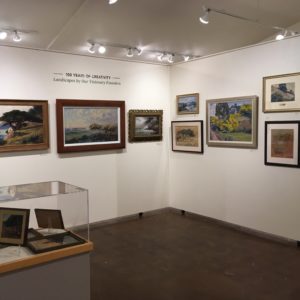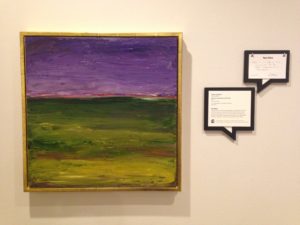
As the Santa Cruz Museum of Art & History (MAH)’s Development Advisor, Ami Davis Consulting provided strategy, guidance, and hands-on fund development during their 2024-25 Executive Director transition. We developed a short- and long-term development strategy, coached the Interim Executive Director on fundraising, and worked with the MAH team to produce new cases for support as well as reboot membership processes.
- Developed a comprehensive Development Plan.
- Coached Interim Executive Director on major gift solicitation, resulting in a $50,000 matching gift.
- Launched year-end appeal, membership appeal, and personalized asks, securing over $60,000.
- Reinstated donor acknowledgment and membership renewal processes. Revised membership levels, benefits, and stewardship strategies.
- Initiated Salesforce improvements to enhance donor tracking and engagement.
- Mentored new full-time Development Coordinator.
- Submitted grant proposals, securing $44,000 in new funding.
- Advocated for 100% board giving, resulting in a 68% increase in board contributions.
- Presented board and staff strategies to strengthen a culture of philanthropy.

$190,000 Institute of Museum & Library Services
Museums for America Grant
Los Gatos History Project
New Museum Los Gatos (NUMU)
Identified, researched, conceptualized, wrote, and secured full funding for a three-year, $190,000 IMLS award for collections stewardship and access
As NUMU’s Executive Director, I prioritized museum best practices including collections care, fair salaries, paid interns, and public access. Due to a lack of collections policy and cataloging strategy when the museum was founded in 1965, most of the NUMU collections have been uncataloged and improperly stored, and objects’ provenance is largely unknown. This three-year award paid for staffing, supplies, and a graduate intern to make progress on digitization; complete the cataloguing process; begin the process of identification and provenance research; refine the Collections Management Policy and develop a Collections Plan; identify items in need of active conservation; and continue NUMU’s momentum to preserve, steward, and display its history collections following museum collections best practices.

100 Years of Creativity: Landscapes by Our Visionary Founders
March 1-April 14, 2019
Santa Cruz Art League
Curated artwork and wrote label text
The Santa Cruz Art League presented its 89th Annual Statewide California Landscapes Exhibition, juried by Ed Penniman. As part of this show, which coincides with the Art League’s 100th birthday, we featured an exhibit of founding Art League members including Frank Heath, Cor de Gavere, Margaret Rogers, Leonora Penniman, and Lillian Howard.

Interpreter Training Series, History San José
Refined informal learning and quality of K-12 students’ experiences
History San José has two desirable characteristics that position it as a well-regarded field trip destination for K-12 learners: a positive reputation with teachers, who are prepared to secure independent funding to attend field trips with their students; and paid Interpreters, who can be effectively guided to provide high-quality informal learning experiences. I introduced History San José Interpreters to critical pedagogical concepts and techniques, including dialogue-based tours, age-grade characteristics, and questioning strategies, with an emphasis on student empathy and Interpreter empowerment. Each training consisted of customized 90-minute presentations and suggested readings. Additionally, I observed and advised on strategies and the lesson plan for their acclaimed “Adobe Days” program.
Active Voice: Contemporary Landscapes from the Museum’s Permanent Collection, Monterey Museum of Art
Curated, planned and executed interpretive approach
Active Voice presented contemporary landscapes from the museum’s permanent collection, with a focus on community voices. To introduce new voices into conventional exhibition didactics, museum staff and volunteers chose artworks that resonated with them and wrote personal interpretations. I led a label writing workshop for staff and volunteers inspired by Beverly Serrell’s Exhibit Labels: An Interpretive Approach, as well as the American Alliance of Museums Webcast, “Exhibition Label Writing at its Best.” Their labels, with the writer’s photo, were mounted on a plaque in the shape of a speech bubble next to each painting, and a corresponding blank plaque was mounted next to it. Visitors were encouraged to read the responses, then participate in the dialogue by writing their own and displaying it next to the paintings.
Self-Guided Visit Activities for the Getty Center, J. Paul Getty Museum
Assessed, conceptualized, developed, and wrote activities
Despite efforts to coach teachers to prepare for field trips (I am inspired by Leah Melber’s approach in “Informal Learning and Field Trips“), surveys and gallery observations at the Getty indicated that self-guided K-12 teacher and student visitors to the Getty Center were not utilizing existing pre-visit, visit, and post-visit materials. The Getty accommodates tens of thousands of self-guiding students each year, so it was important to ensure a quality experience while managing crowds in the galleries. I took a staggered approach, developing activities ranging from “Print & Go” (to indicate very little teacher preparation was necessary) to more in-depth, grade-based lesson plans requiring more teacher preparation. “Print & Go” featured open-ended, free-choice activities that could be used with any work of art as teachers and chaperones roamed galleries with students. Follow up assessments revealed that teachers were able to easily use the new activities in the galleries to encourage close looking with very little advance preparation.

